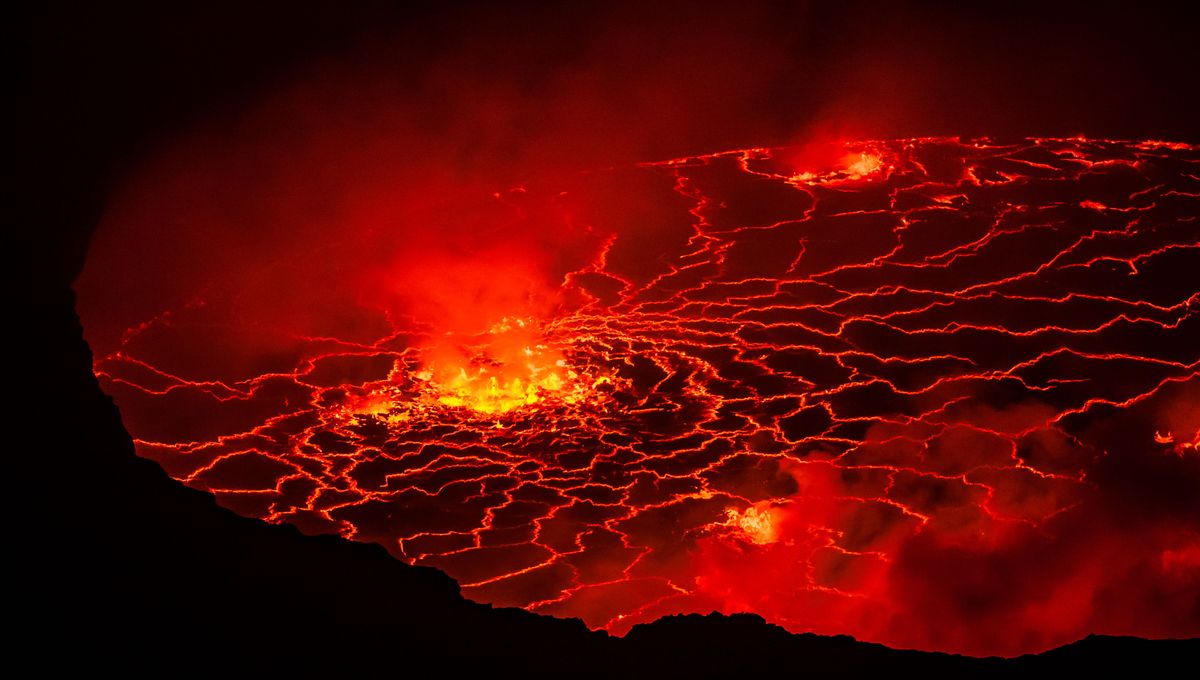
The world’s largest lava lake lies in the Democratic Republic of the Congo (DRC), nestled within Mount Nyiragongo. Stretching about 250 meters (820 feet) across at a depth of 600 meters (1,970 feet), it’s quite the hot tub of bubbling magma.
Part of the Virunga Mountains, it sits within the UNESCO World Heritage Site Virunga National Park, close to the city of Goma in eastern DRC. A chain of eight active volcanoes stretches across the landscape, experiencing eruptions at regular intervals every few years. Nyiragongo joins Nyamuragira in being the most active in Africa, the two being responsible for two-fifths of the historic eruptions on the continent, according to UNESCO.
The highly active pair are notable for the extreme fluidity of their basaltic lava flows, meaning eruptions are particularly dangerous as the lava can move at speeds of 60 kilometers per hour (37 miles per hour). This was demonstrated in the deadly 2002 eruption, which resulted in dozens of fatalities and displaced almost 500,000 DRC citizens as fissures along its southern slope leaked lava into the environment.
The reason why the lava is so dangerous is that it’s low in silica, and it’s the strong silicon-oxygen bonds that usually make lava thick and slow-moving. The difference is so significant that fast-flowing lavas were responsible for 90 percent of recorded lava-related deaths in the 20th century.
Deep inside Nyiragongo’s crater sits the largest lava lake in the world, filled with semi-permanent lava that empties every now and then in the event of catastrophic eruptions. Lava lakes are characterized by large quantities of molten lava, meaning it’s not solidified, and so puts on a smoky display in the day before lighting up at night with hues of orange you love to look at but don’t want to touch.
(Side bar: If you’ve ever wondered what lava would taste like, good news! You’re not alone. We put that exact question to the raised eyebrows of Scientist-in-Charge at the Yellowstone Volcano Observatory, Michael Poland, and University of Buffalo Associate Professor of Geology and expert on planetary volcanology, Tracy Gregg, in our first-ever issue of CURIOUS.)
Its high rate of activity, fast-moving lava, and proximity to humans make Nyiragongo one of the most dangerous volcanoes in the world. As such, scientists keep tabs on its movements for early warning signs of an eruption.
For all its ferocity, Mount Nyiragongo is also a breathtaking sight to behold, surrounded by lowland forests that are home to a variety of animals, including chimpanzees, monkeys, beautiful birds, and three-horned chameleons. If you’re up for a bit of hiking, you can take it all in along the Nyiragongo Volcano Trek.
This article first appeared in Issue 26 of our digital magazine CURIOUS. Subscribe and never miss an issue.
Source Link: One Of The Most Dangerous Volcanoes Is Home To The World’s Largest Lava Lake